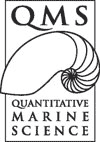
4th International Albatross and Petrel Conference
Cape Town, South Africa, 11-15th August 2008
The UTAS-CSIRO Joint PhD Program in Quantitative Marine Science supplied me with a grant so that I could attend the Fourth International Albatross and Petrel Conference, in Cape Town, South Africa from 11-15 August 2008. This was the third international conference I have attended (and the first outside Australia), and I found the experience invaluable.
The conference had no single theme, but had a number of sessions concentrating on single issues, such as “Distribution at Sea”, “Interactions with Fisheries”, “Status and Trends”, and “Demographics”. There were 66 oral presentations, two round table discussions and 30 posters presented at the conference. It was thus possible to attend all sessions. There were approximately 100-150 attendees. Attendees were from all continents, so there was a diverse range of views and experiences given.
I made an oral presentation, “Distribution and foraging habitats of the flesh-footed shearwater Puffinus carneipes off eastern Australia” during a session on Distribution at sea. This talk was presenting some of my work looking at data collected by fisheries observers. A number of people came up to me after my talk and wanted to further discuss some of the issues raised in the talk. In addition, I have collected a great deal of data using Light-based geologgers, and a number of talks were given that used data collected by these devices. I was able to discuss issues of the analysis of this data with these people, and to get good ideas for further work. There were some lively discussions on appropriate quantitative methods that should be used for the data.
Because all talks were in one location and there were tea breaks during the days, it was easy to talk to a number of people about issues that might have come up in presentations. There were also a number of bars and restaurants nearby, and so it was easy to find groups of scientists getting together to discuss issues from the days talks or from other significant issues that were important (especially in front of Mitchell’s Brewery!). These meetings usually led to going out to dinner with various groups.
After the conference, there were a number of excursions arranged, which gave a chance to see seabirds at sea, and also to visit breeding colonies of two seabird species. It also gave further chances to interact with fellow scientists.